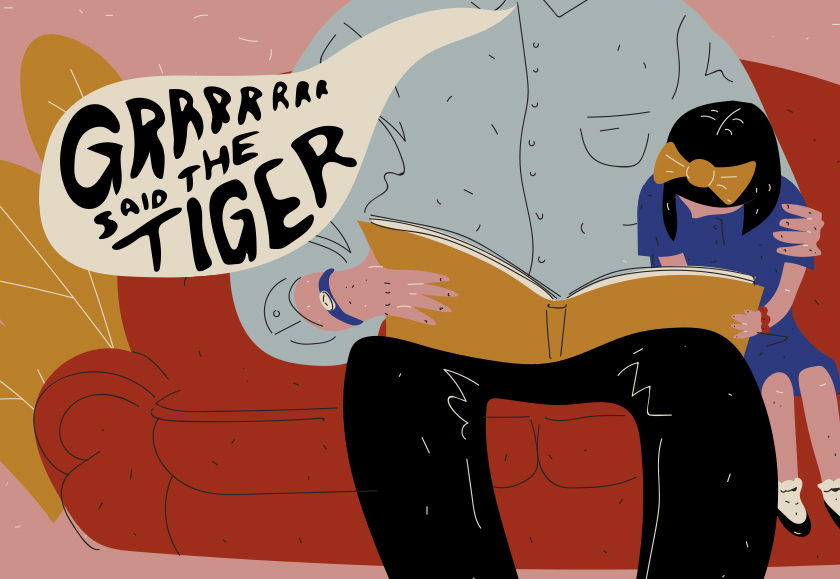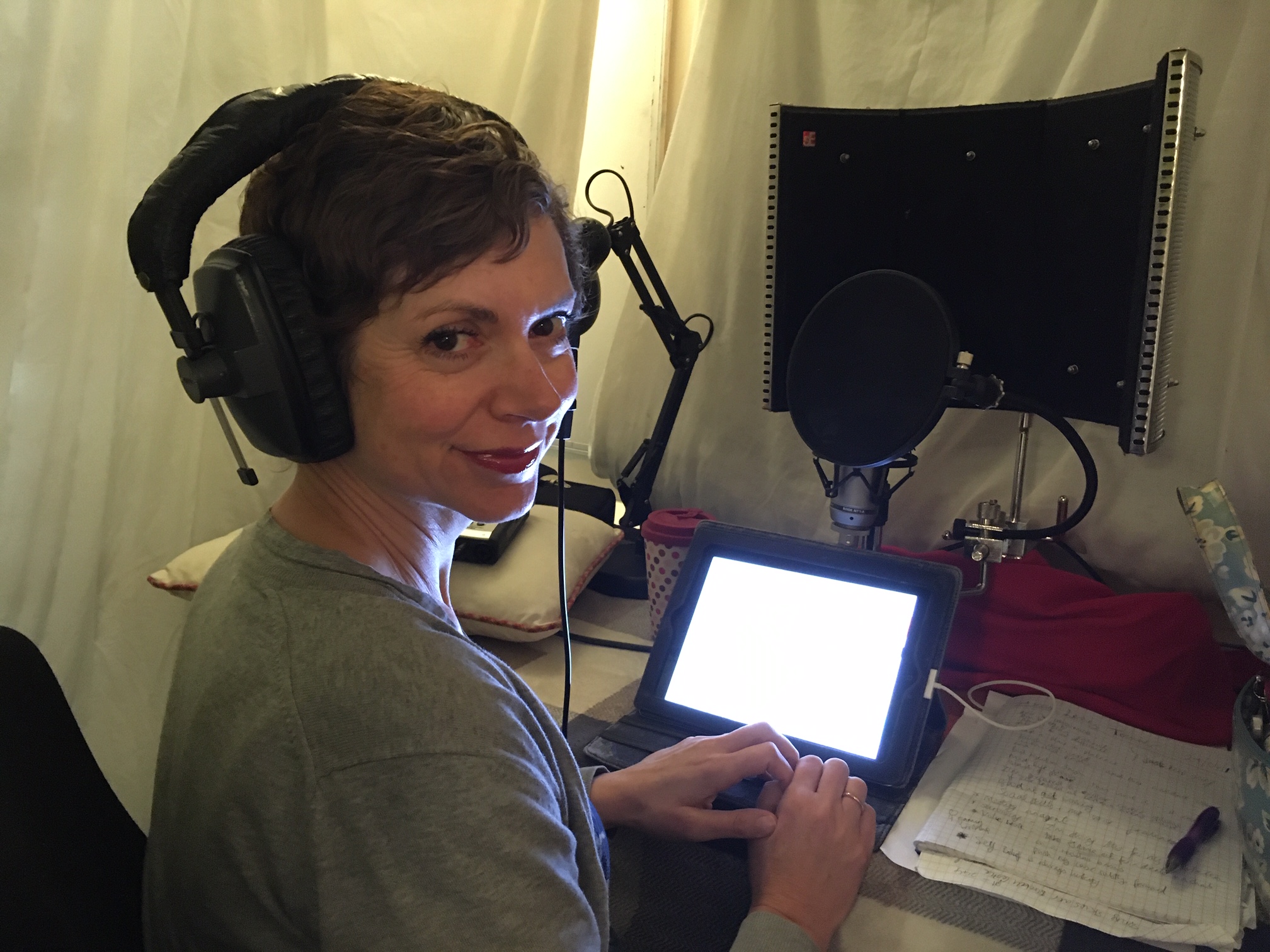- Home |
- Search Results |
- How to read out loud to your children, according to audiobook narrators

How well, really, do you read to your children? Does your voice-work have all the depth and drama of Laurence Olivier doing Hamlet? Or are you more the “get-it-done-in-time-for-dinner” kind of parent? Do you ever stumble on long sentences, or get confused over which character is speaking as chapters unfold? Have you ever dozed off mid-sentence, or been asked why your Harry Potter is starting to sound French?
“It's a time to have with your children, uninterrupted, one to one,” says Rachel Bavidge, a mother of two boys (aged 10 and 11) and veteran voice actor whose repertoire includes Ladybird Classics: The Complete Audio Collection. “It makes children feel special to know they have your undivided attention, which can be hard to provide all the time.”
So what can we do to improve our bedtime storytelling? Here, Russell and Bavidge offer their expert advice.
Different stories work for different times of day
“Always think: am I trying to engage my children, or get them to sleep? If I want to engage my kids I'll choose a book that's exciting, full of cliffhangers, energy, different character voices – something like Percy Jackson, Artemis Fowl or Mr Gum.” says Bavidge. “On the other hand, if they're really tired and it's late, I don't want to gee the kids up. I want to soothe and settle them.
"I still want to tell a story, but I want to do it in a gentle way. So I use more subtle, thoughtful books where kids want to know what happens but can wait until tomorrow for the next chapter. Familiar books they already know are best for that. For my kids, that'd be Diary of a Wimpy Kid, or anything by Roald Dahl, C.S. Lewis or Michael Morpurgo.”

Never rush it
“This is a golden rule in book narration,” says Russell. “People often think that reading really fast adds drama to a story. But actually, slowing it down will add so much more texture to your narration. You often get actors – singers too – who get to the end of a difficult section and then mess up the last part because they're so relieved to have made it to the end.
"So, really, the tip is: read slower than feels natural. The difference it makes by taking a few moments to enjoy what you're reading may be minuscule to you, but it can make a huge difference to the child who's listening.”
Get to know the characters in advance
“In my professional work, I mark up each character in different colours, I pull out any physical descriptions or moral judgments about them; anything that'll help me come up with a voice.” says Bavidge. “On particularly long sentences, I even put ticks where I need to breathe so I don't run out of breath before a full stop.
"But I apply a similar principle when it comes to reading to my kids, albeit not quite so painstakingly. So, if I have time, I always read a book myself before reading it to them so I know what it's about, who the characters are and what's going to happen so there are no surprises.”
Practice by reading out loud to yourself
“I'm like a skydiver who's afraid of heights.” says Russell. “Flawless reading wasn't something that came naturally to me. So I regularly practice by reading aloud to myself, as I did last night with a Lee Child novel. It sometimes annoys my wife, after putting up with it for 30-odd years, but it's been invaluable in getting me to where I am now.”
Experiment with you voices
“If you have a writer who does very good character descriptions, use them,” says Bavidge. “For the books that don't offer any help about character work, I think, 'Who would I get to play them in a film?' Are they tall, short, heavy, light? Do they speak fast or slow? Are they bright or stupid? Do they speak posh or do they have a regional accent?
"You can decide if you want to speed someone up, slow them down, add stutters or hiccups, make them have a nasal drip. I might put a lisp in, or make them bumbling and hesitant. Anything to bring the character more to life.”
Keep it entertaining for you, too
“Like most parents, I find myself reading the same books over again,” says Bavidge. “And it can get a bit boring. So, to make it more fun for me, I throw in accents that might not fit the stereotype.
"The Worst Witch should probably have a witchy accent, but she could also be a Geordie (I'm originally from the North East). What would Cinderella sound like as a cockney? Could Dumbledore be a Dubliner? Why shouldn't Shere Khan be Eastern European? And if the kids don't like it, they will tell you.”
Don't sell it too hard
“Let the book do the work,” says Russell. “A good book should be funny or dramatic enough without your exaggerated voices. So only do the voices that come naturally to you. That's not to say you shouldn't do voices, but you don't have to do a big, fancy voice for every single character.”
And always be yourself
“I once asked my kids why they liked stories at night,” says Bavidge, “and they said, 'Because we don't have to work; our brains can be quiet for a bit.' The parent does the work and the child can just switch off.
"Sometimes kids don't want whistles and bells and fireworks. They just want you. Story time is the most bonding moment of the day for many parents and kids, and there's something so comforting about listening to the calming voice of the person they adore most in the world as they go to sleep.”
Never talk down to your audience
“Talking to children, rather than at them, is the single most important skill a children's book narrator can have,” says Russell. “It's very easy to fall into a sort of patronising tone when reading children's books as if talking to a baby, especially once-upon-a-time type stories.
"So read to your kids in exactly the same tone as you would talk to them normally. With Wimpy Kid, I have a place in my voice where I'm not a scary adult, but I'm not a wimpy adult either. It is a hard thing to master, but always worth thinking about.”
Dan Russell's most recent audiobook narration is Dog Diaries: Camping Chaos!